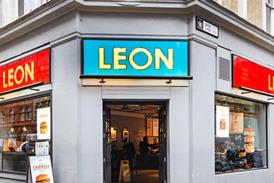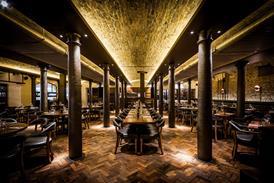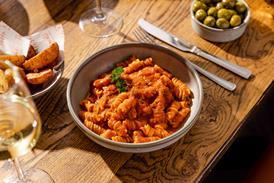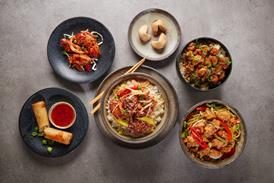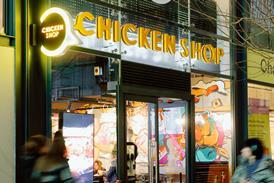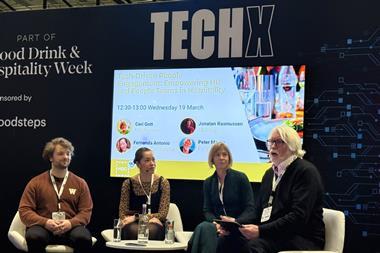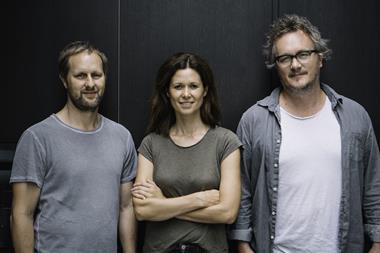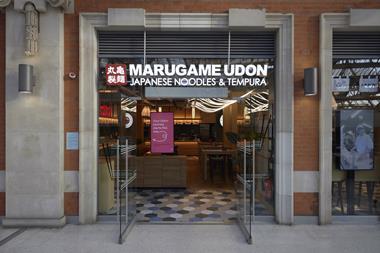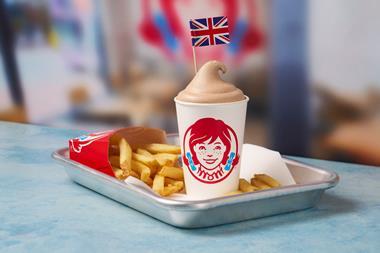Almost nine years since the Caravan team opened their first restaurant at Exmouth Market, they are still winning awards for their concept, collecting the Retailers’ Retailer Evolution Award last month. Co-founder Miles Kirby spoke to MCA’s sister title, Food Spark, about the brand’s constant thirst for innovation.
While its biggest claim to fame might be helping to popularise avocado toast in the UK, Caravan has since become known for dishes like jalapeno cornbread and wontons stuffed with peanut butter and stilton – quirky flavour combinations that come from the mind of Miles Kirby, who overseas the food side of the operation as executive chef.
“Creativity, innovation and quality is at the heart of everything we do,” he says, explaining why he thinks Caravan continues to garner acclaim. These watchwords are supported by “a drive from myself and my business partners to not settle for the expected and to always aim to bring something new to the table.”
Last year, Kirby, along with Caravan co-founders Laura Harper-Hinton and Chris Ammermann, entered fresh territory with the opening of their own roastery as well as a fifth site in Fitzrovia. This site has been used as a trial space for Caravan To Go, a spin-off that offers a diverse cross-section of the main menu for people who want to take away their breakfast or lunch.
Kirby says they are considering other formats going forward, though hastens to add that they’re not in a position to talk about this yet.
“The pressures on the restaurant industry, the current financial strain on the restaurant industry and the costs related to opening large-format restaurants, might – might – force many people to look at potential different formats for what they’re doing,” he adds coyly.
While Caravan’s future dining spaces will have to remain a mystery for now, Kirby opened up to Food Spark about best-selling dishes, healthier plates and bringing bread making in house:
I get inspiration for menu development all over. I’ve always said creative inspiration comes from everywhere: every menu we read, every meal we eat, every person we eat with. It’s the ability to put those little pieces together into something unique and original that makes us stand out.
It’s about an eight-week process to make a substantial change to the menu, i.e. 50%. It involves an exclusion process to begin with by isolating and planning to remove dishes that are not working as well as others for any reason. It may be guest experience, it may be that it requires too much resource from the teams. Idea gathering comes next to fill the gaps left, then concept consolidation, development and sign off.
One dish we can change quickly but a broader cross menu change takes longer.
With the launch of our new coffee roasting operation just north of King’s Cross came an opportunity to bring all sourdough production in house at a space we designated to bake for ourselves. We have a great team in place and are nearly ready to hit go across our group with house supply of our own great product… Bringing that bakery in house is quite an exciting thing that we’re up to.
It is a really large project actually. We’re producing all of our counter food now and distributing that to the five restaurants, but the next step is to begin the sourdough and the gluten-free bread and a couple of other items, one site at a time, and that will probably take a couple of months to roll out I’d say.
I’m most proud of the stalwarts on the menus, without a doubt. The corn bread and the wontons are two dishes to have stood the test of time and continue to please even nine years on since their conception. They just sum up what we’re all about. The wontons are a very odd combination – blue cheese and peanut doesn’t sound like everyone’s cup of tea, but they’re absolutely delicious and people seem to like them. We’ve tried to remove it a couple of times and people just freak out, so we just leave it on!
I find that we change the same five to 10 things regularly, but the skeleton of the menu stays the same – which is not a bad thing, you need to have some consistency throughout. But sometimes I look at it and go, I wish I could just take it off and change it, but there’s a public outcry.
I’m kind of realistic about the fact that we need to try something else out, and if it doesn’t work we can always put a successful thing back on that we used to do. It’s not like it’s disappeared into the ether and we can never revisit it! Let’s try something new, let’s keep our team inspired, let them contribute, let them learn, and that sort of cycle pushes itself around. Living in a creative environment just breeds more creative people that want to do creative things.
About 60% of our small plates are vegetarian, and then we have 20-30% meat. So they’re the ones we probably evolve and change the most
I think one of the greatest dishes on the menu is the tofu dish [crisp chilli-salt tofu, ong choi, salted black beans and sesame], created by our exec chef Matt Burgess. It gets a lot of love but still gets overlooked by the general public due to its tofu-ness.
I’ve never worked in a restaurant where tofu has been one of our biggest sellers. I think just because of the fact that [the crisp chilli-salt tofu] is tofu and it is a good seller is an extraordinary achievement. I think it’s absolutely delicious. It’s texturally great, the flavour’s great, it’s surprisingly good. You talk people into ordering it. They don’t want to order it, but we talk people into ordering it and they love it.
Another one of our big sellers is a cauliflower dish that we serve with harissa and some pomegranate yoghurt. We’ve done squash with miso and blue cheese – just another weird, interesting combination again.
Cabbage is always a goodie. I think sometimes our use of bold flavour can often sell a dull ingredient to people that may not normally order something like that.
A few years ago, we introduced a salads and grains section to our menu, which has proved pretty popular. We just adapted that section so it’s now a larger plates format for those things. People can come in and have a main course salad or a grain, rather than just a small plate option.
In terms of meat alternatives, I find anything that’s that heavily processed not really that attractive. Although having said that it’s just something I’ve never really exposed myself to and probably don’t really know enough about it. I’m kind of a firm believer that if you don’t want to eat meat, why would you eat something that looks, tastes and feels like meat but isn’t? It just seems a bit strange to me – but that’s probably coming from a position of ignorance.
In reality, the biggest sellers seldom get knocked off the top and these are the ones you would expect from a Caravan experience: cornbread, meatballs, dumplings, wontons, tofu. At breakfast, again, cornbread, fry up, hot cakes, fritters.
The biggest new groundswell has to be the increased interest in the healthier items on the menu. A genuine interest in plant-based dishes is really apparent and expected of menus these days. Thankfully, we have always been well placed to cater for these requirements and have certainly given them even more attention of late.
Healthy, fresh, value, innovative, interesting, original, accessible, tasty, sustainable, new. All these trends will be huge going forward.
If I think back five years, I probably tried to complicate things a lot more than I do now. I don’t think I’ve necessarily changed too much about the way I do things on the plate, but maybe about how we word things on the menu.
I think using terms that invoke emotion – like charred and burnt and caramelised and things like that – welcome people, rather than using a word that maybe people don’t understand. Instead of gochujang, we might put fermented soybean or the like.
I do also think that people who are experimental have a bit of responsibility to introduce new ingredients to people. If we can do that in a way where we’re substituting something new for something classic, like maybe a miso caramel rather than a salted caramel, you can introduce someone to a different way of doing something, or introduce a salty flavour to a dessert without using salt. And it’s only by using these ingredients that people become used to them and then you start seeing them everywhere.
Once people express an interest in an ingredient we can really start talking about it and make sure the staff are trained on it and they can talk to people about it. I’m sure 20 years ago in London restaurants miso wasn’t a thing, probably no more than coriander or ginger even. But these things have to change.
We think about and talk about going outside London a lot. What excites us are places like Paris and New York and LA, big capital cities. More so than towns that might replicate [the experience of] opening a restaurant in our hometown of Wellington, New Zealand, with a population of a similar size. We’re more excited about big-picture growth than just sticking something in a smaller provincial town, but I’m certainly not ruling that out at some point.
Article originally published on foodspark.com, a digital subscription service designed to inspire and inform innovation across the food industry.
For anyone needing to stay ahead of the culinary curve, Food Spark will offer immediate access to the emerging trends, ingredients, personalities and headwinds defining the future of food. Explore more content by visiting Food Spark or by requesting a demo: joinus@foodspark.com or 01293 610371
Precis
Caravan: ‘Pressures on the sector are forcing everyone to look at new formats’
Almost nine years since the Caravan team opened their first restaurant at Exmouth Market, they are still winning awards for their concept, collecting the Retailers’ Retailer Evolution Award last month. Co-founder Mile Kirby spoke to MCA’s sister title, Food Spark, about the brand’s constant thirst for innovation.


